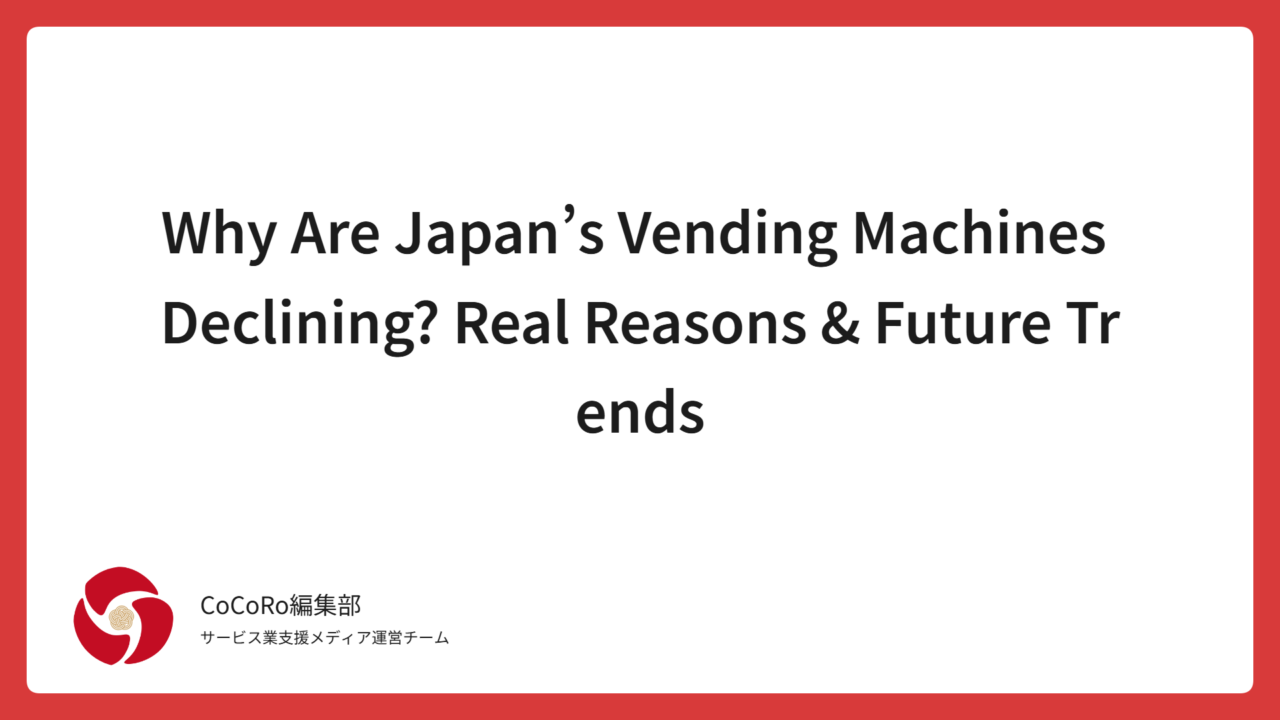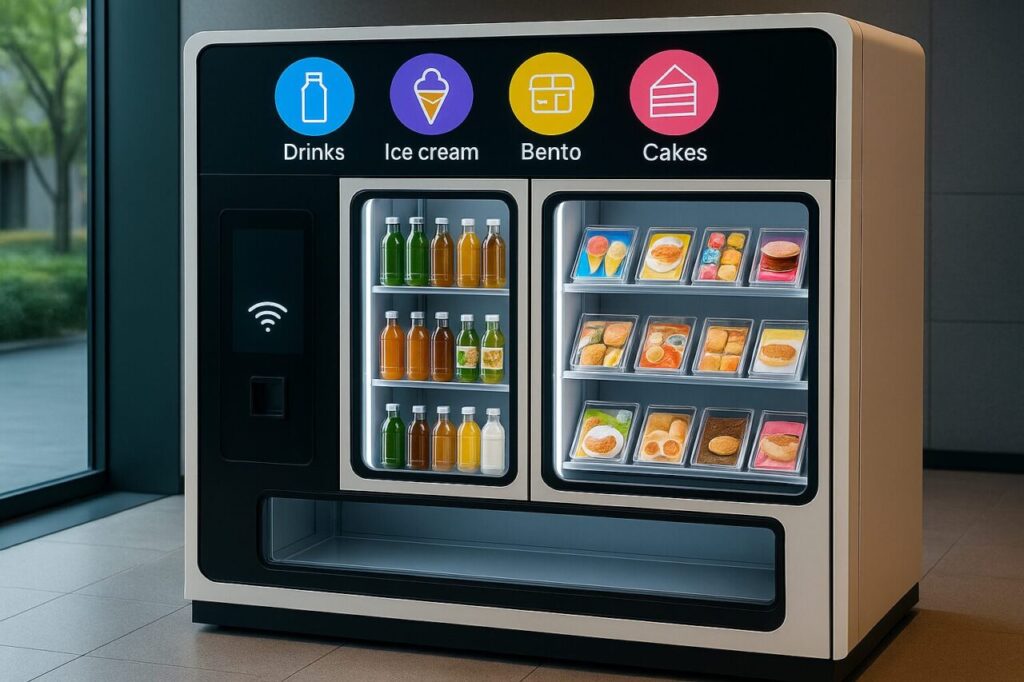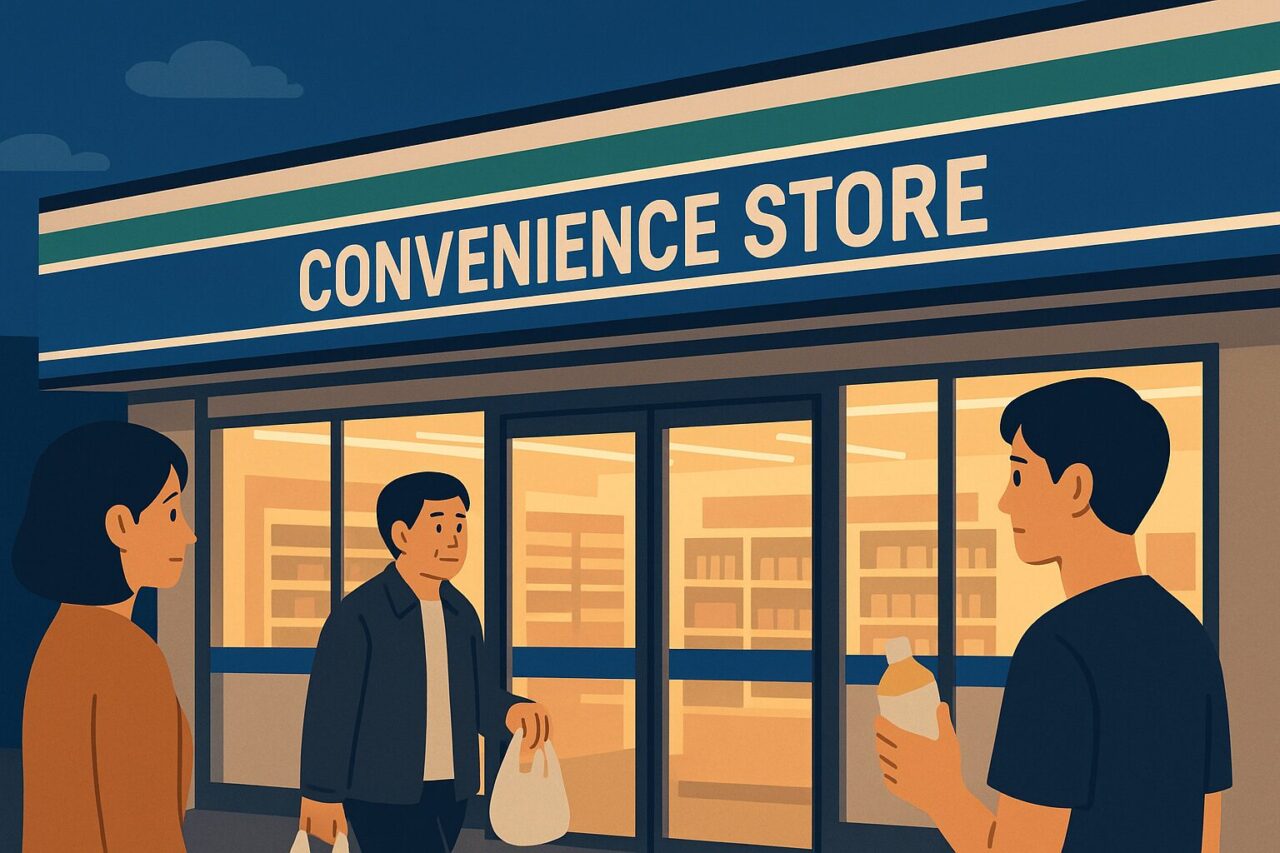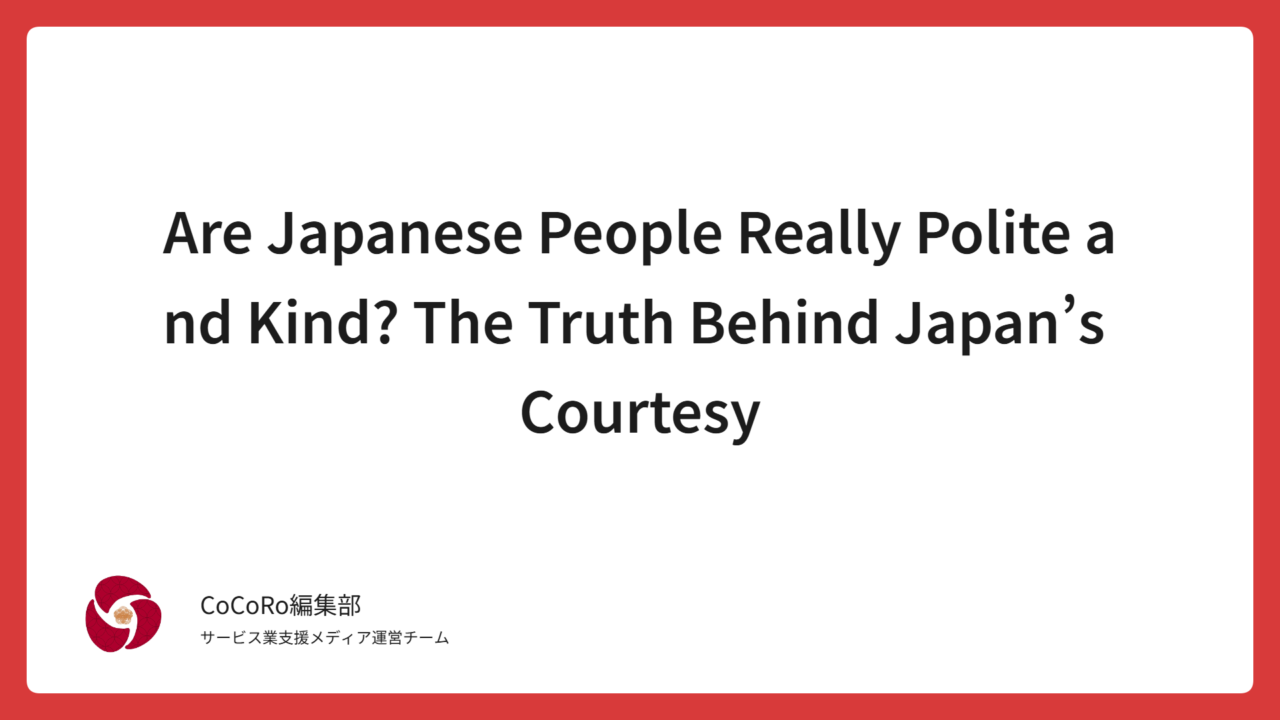

When you walk through the streets of Japan, you’ll almost always spot vending machines wherever you go.
Their sheer number is unmatched globally, earning Japan the reputation of a true “vending machine nation.”
However, in recent years, voices like these have been appearing more frequently in the news and on social media.
“I’ve heard that Japan’s vending machines are actually decreasing.”
“It feels like they’re disappearing from street corners compared to the old days.”
So, are vending machines in Japan really decreasing?
And does this decline truly signal the end of Japan’s vending machine culture?
To put it simply—
Japan’s vending machines are not “declining,” but rather undergoing a major structural transformation.
What’s declining are the old-style drink vending machines.
Meanwhile, new-generation machines—such as those offering frozen meals, tourism-focused products, and various services—are rapidly increasing.
In this article, we explore two key questions from historical, structural, and future-focused perspectives:
“Why are vending machines decreasing?”
and
“Why is Japan’s vending machine culture actually evolving rather than fading?”
- How Much Have Japan’s Vending Machines Actually Decreased?
- Why Did Japan Become a Vending Machine Powerhouse? —Historical and Cultural Factors
- Why Are Vending Machine Numbers Decreasing Even Though Users Haven’t Declined?
- Structural Shift #1: Profitable Locations Have Clearly Decreased
- Structural Shift #2: The Disappearance of Cigarette Vending Machines — Once a Major Source of Revenue
- Structural Shift #3: Rising Competition and Higher Land Rental Costs Have Made Traditional Vending Machines Uncompetitive
- What Kinds of Vending Machines Are Increasing?|A Quick Guide to the New Generation
- How Will Vending Machines Evolve in the Future?|Exciting Predictions for What’s Coming Next
- Summary|Japan’s Vending Machines Are Not “Declining” but “Transforming”
How Much Have Japan’s Vending Machines Actually Decreased?
Let’s start by looking at the facts.
Japan’s vending machines reached their peak in the 1990s to early 2000s, with around 5 million units nationwide.
For a country of roughly 120 million people, this density was extraordinary—placing Japan among the highest vending machine concentrations in the world.
However, in recent years, that number has begun to decline.
According to the latest estimates, the total has dropped to the low 4-million range.
That said, looking at these numbers alone and concluding that
“vending machines in Japan are finished” or
“the industry is in decline”
would be premature.
The real issue, however, is that—
“It’s not that fewer machines = a weakening vending machine culture.”
“Rather, the industry is shifting—removing machines from unprofitable locations and concentrating them where they actually sell.”
This shift is a clear sign of a structural transformation taking place.
To understand this perspective, we need to look at the history behind why Japan became a “vending machine nation” in the first place.
Why Did Japan Become a Vending Machine Powerhouse? —Historical and Cultural Factors
It’s common for foreigners to ask, “Why are there so many vending machines in Japan?”—often with genuine surprise.
There are three main reasons.
1. The High-Growth Era: A Golden Age When “If You Placed One, It Sold”
From the 1960s through the 1990s, Japan experienced rapid growth in both population and foot traffic.
Busy areas continued to expand not only in major cities but also across regional towns and rural areas.
During this period, vending machines became the ultimate growth business—
once you placed one, it practically generated sales on its own.
- workers who stayed on the job late into the night
- office workers who were frequently on the go
- the rapid expansion of the coffee and soft-drink market
In other words, the structure of society itself was perfectly suited to the growth of vending machines.
2. Safety, Technology, and Japan’s Culture of Cleanliness
There are very few countries in the world where vending machines can operate without being vandalized.
In Japan, however,
- a low crime rate that makes vandalism rare
- technology that keeps machines highly reliable and unlikely to break down
- a high standard of restocking and maintenance
- a culture of using coins and a strong commuting culture
These factors made vending machines a natural part of everyday life in Japan.
3. Before Convenience Stores Spread, Vending Machines Were the Only 24-Hour Option
In the 1970s through the 1990s, convenience stores were still relatively few in number.
The only place you could buy a drink late at night was a vending machine.
That’s why vending machines kept multiplying across towns and cities,
eventually reaching an extraordinary density of five million units at their peak.
With this history in mind, the current decline is not simply a matter of “losing popularity,” but—
“the conditions that once favored vending machines have changed, and the excessive placement from the old era is simply being corrected.”
—and this reveals the true underlying reality.
Why Are Vending Machine Numbers Decreasing Even Though Users Haven’t Declined?
Here’s where we get to the heart of the matter.
You may have sensed this yourself.
- The number of inbound tourists has surpassed 30 million and continues to grow.
- Cashless payments have made vending machines even easier to use.
- The public perception of vending machines remains positive.
So why are they decreasing?
If anything, hasn’t the number of users actually increased?
The truth is, there’s a very important reality behind this.
Vending Machine Numbers Are Determined Not by Demand, but by Supplier Profitability
Even if the population is large, the number of vending machines won’t necessarily increase.
And even if the number of users grows, vending machines won’t increase because of that either.
The vending machine business operates based on the following equation:
Revenue (location × purchase rate × unit price) − Fixed costs (electricity, restocking, rental fees)
If this equation doesn’t result in a positive balance,
the vending machine will be removed.
It has nothing to do with demand.
In other words,
It’s not about whether more people are using vending machines—
what matters is whether a machine can be profitable at that specific location.
This is the key to understanding why the number of machines can decrease even when the number of users is growing.
Structural Shift #1: Profitable Locations Have Clearly Decreased
Since the 2000s, the structure of Japanese cities has changed dramatically.
More Serious Than Population Decline: The Shift in Foot Traffic
- residential areas where fewer people are walking
- entertainment districts where nighttime foot traffic has disappeared
- office districts emptied out by remote work
- main roads in rural areas that are becoming increasingly depopulated
In many of these areas, vending machines that once sold dozens of items a day
now sell only a few.
Even When They Don’t Sell, Electricity and Restocking Costs Still Apply
- about ¥70,000–¥120,000 per year just to keep drinks chilled or heated
- labor costs for restocking trucks
- maintenance and repair response
- location rental fees
Keeping an unprofitable machine in place results in a complete loss for the vending machine operator.
As a result,
vending machines in “unprofitable locations” are being removed across the country all at once.
This is the biggest factor behind the decline in vending machine numbers.
Structural Shift #2: The Disappearance of Cigarette Vending Machines — Once a Major Source of Revenue
The vending machine industry once had a “hidden core” that most people never knew about.
That was the cigarette vending machine.
Cigarette Vending Machines Were the Industry’s Cash Cow
- extremely high turnover
- high profit margins
- fewer breakdowns and fewer restocking cycles
- profit per unit several times higher than that of beverage vending machines
In fact, the thin profit margins of beverage vending machines were being offset by the profits from cigarette sales.
However…
- a sharp decline in smoking rates
- the introduction of taspo ID cards
- stricter regulations
- a shift of cigarette sales to convenience stores
Because of these factors, cigarette vending machines have rapidly disappeared nationwide.
With this “pillar” gone, the profitability of other vending machines also collapsed.
Structural Shift #3: Rising Competition and Higher Land Rental Costs Have Made Traditional Vending Machines Uncompetitive
The spread of convenience stores is not the reason.
Convenience stores existed decades ago as well.
Yet vending machines continued to increase during that time.
However, the situation today is very different.
● The sharp rise in location rental fees
- In commercial areas, rents have become too high for vending machines to remain profitable
- In residential areas, obtaining resident approval is required, creating a high barrier
- Increasing legal restrictions and aesthetic ordinances have made many locations ineligible for installation
There was a time when property owners would ask, “Please put a vending machine here.”
Today, it’s the vending machine operators who have to say, “Would you allow us to place one here?”
A complete reversal of value has taken place.
The Spread of Cashless Payments Has Ended the Era When Vending Machines Were the Fastest Option
In the past, “you can buy it with just coins” meant vending machines were the fastest option.
Today, with smartphone payments and electronic money, you can make instant purchases almost anywhere.
→ Vending machines are no longer the only fast choice.
The very source of their competitive advantage has weakened.
So, Is Japan’s Vending Machine Culture Coming to an End?
The answer is “No.”
If anything—
Japan’s vending machines are now entering a new era of evolution.
What’s decreasing are the old models (drink, cigarette, and alcohol machines).
Meanwhile, what’s increasing are entirely different categories of next-generation vending machines.
What Kinds of Vending Machines Are Increasing?|A Quick Guide to the New Generation
① Frozen Food Vending Machines (Exploding in Popularity)
Gyoza, ramen, meat, curry, cakes—
a huge variety of foods can now be purchased frozen.
These machines pair perfectly with Japan’s booming takeout culture,
and their numbers are skyrocketing nationwide.
② Tourism-Focused Vending Machines
- Japanese sake tasting
- Region-exclusive drinks
- Omamori (protective charms)
- Goshuin seal stamps
- “Good-luck charms” and Mt. Fuji souvenirs
These machines cater to inbound travelers seeking “experiences you can only have in Japan,”
and in many tourist areas, vending machines are actually increasing rather than decreasing.
③ Unmanned Service Vending Machines
- Umbrellas
- Mobile battery rentals
- Eye drops & cold medicine
- Condoms
- Tickets
A perfect fit for modern life, these machines offer a style where you can get exactly what you need right when you need it.
④ Digital Signage Vending Machines (Advertising-Based Models)
These machines display advertisements on built-in screens,
creating a hybrid model of ad revenue × beverage sales.
→ This has fundamentally changed how vending machines turn a profit.
⑤ Community-Based & Municipality-Run Vending Machines
- A portion of the sales is donated to animal welfare
- Collaboration with local NGOs
- Disaster-response vending machines that support the community
Their role has expanded from simply being “drink dispensers” to becoming local infrastructure.
How Will Vending Machines Evolve in the Future?|Exciting Predictions for What’s Coming Next
The vending machines of the future
will no longer be “drink machines.”
● AI Will Analyze Locations and Place Machines Only Where They Will Sell
AI will automatically optimize placement by analyzing:
- foot traffic
- purchase history
- time-of-day sales patterns
- weather conditions
- nearby competitors
This will transform vending machine installation into a science,
maximizing efficiency across the entire network.
● Vending Machines Will Become “Small Unmanned Stores” in the City
- frozen foods
- medicine
- daily necessities
- local specialties
- digital services
Vending machines will essentially become miniaturized retail stores,
evolving into an indispensable part of urban infrastructure.
● Tourism × Vending Machines Will Become a New Strength for Japan
Inbound travelers often say that “Japanese vending machines are fun.”
Touchscreens, hot-and-cold selections side by side, exclusive items, limited-edition designs…
As a tourism experience, vending machines are not fading—
they are a field that will hold even greater value in the years ahead.
● Their Value as Disaster-Relief Infrastructure Is Rapidly Increasing
- machines that provide free access during power outages
- supply distribution during disasters
- emergency support for local residents
In a country prone to natural disasters, vending machines are becoming an essential part of community infrastructure.
Summary|Japan’s Vending Machines Are Not “Declining” but “Transforming”
To sum everything up in one sentence:
The decrease in vending machine numbers is not a sign of decline—
it is a restructuring, where outdated machines are being phased out and new-generation models are taking their place.
- The number of users is actually increasing
- Demand in tourist areas continues to rise
- New categories like frozen-food machines are booming
- Vending machines are evolving into essential unmanned infrastructure
Japan’s vending machine culture is not ending.
If anything, the most exciting and opportunity-rich era is just beginning.
And the new vending machines you see around town—
those are the first steps toward that future.






